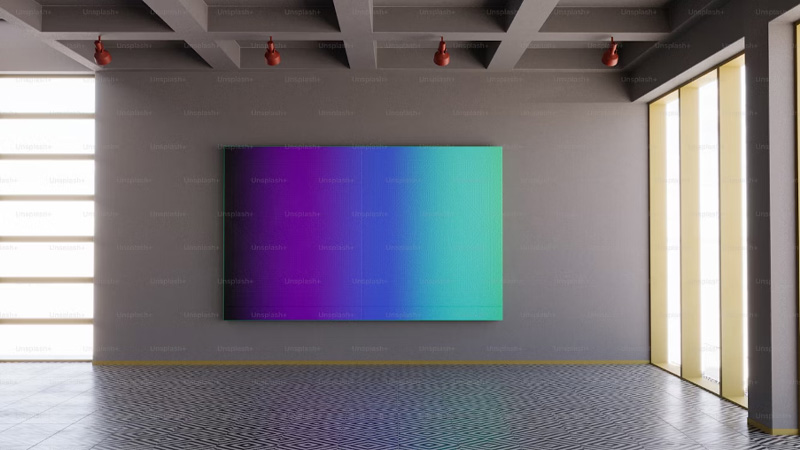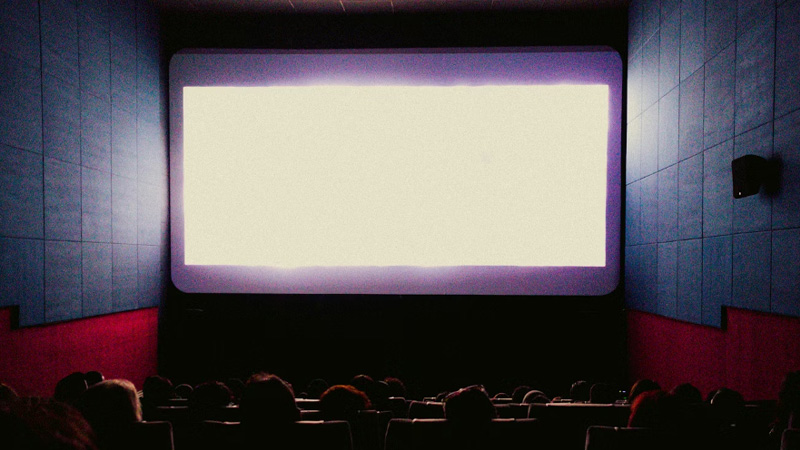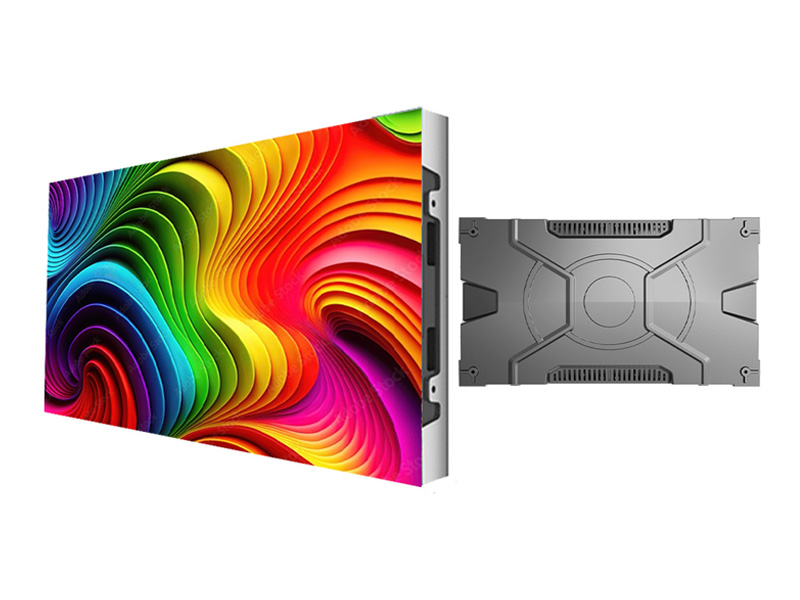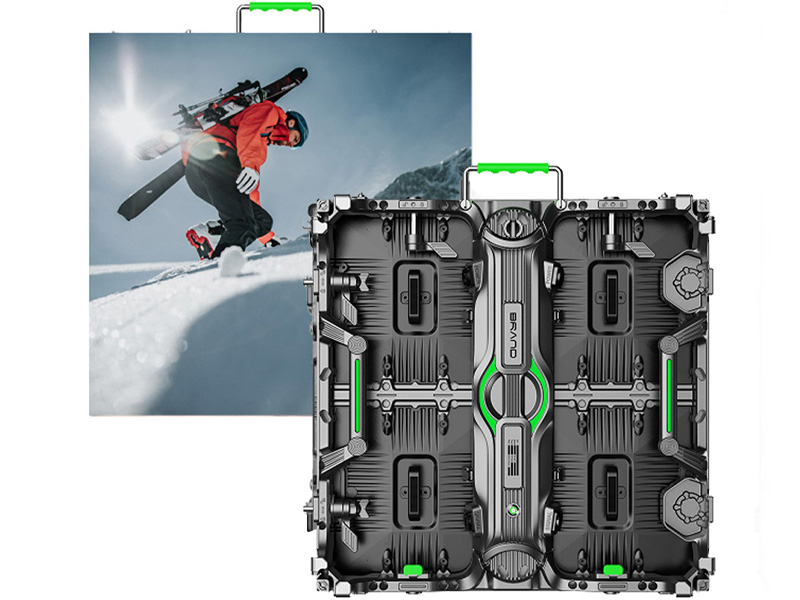Projector Screen vs LED Wall: A Definitive Comparison
What is better than having a visual experience to not forget? You may be in a corporate setting or a home theater. But choosing between a projector screen and an LED wall is a difficult choice to make for everyone.
It is important to understand both in-depth before making an informed decision that will best suit your needs. We will have to observe some important differences, benefits, and drawbacks of both. This article gives you a brief comparison between the two. This comparison will also guide you to make your decision at the same time.
We know that each option has its own advantages but also its disadvantages. Let’s understand the basic differences first.
-
Projector Screens
A projector screen is a surface onto which an image is projected and shown. It is made from different materials designed to optimize the image quality. Projector screens come in different forms like fixed screens, retractable screens, and portable screens. But each of these is suited to different environments that cater to different needs.
- Types of Projector Screens:
● Fixed Frame Screens: They have permanent installations. You will commonly find them in dedicated home theaters.
● Retractable Screens: These screens can be rolled up and down as needed. This makes them ideal for multi-purpose spaces.
● Portable Screens: They are light in weight and easy to set up. People personally use them for mobile presentations.
-
LED Walls
Now, let us discuss LED walls. These displays have LED panels that connect to form a large and continuous screen. LED walls are famous for delivering better brightness and color accuracy. They can display content in different lighting conditions. People mostly use them in large venues and retail environments.
- Types of LED Walls:
● Indoor LED Walls: Indoor LED walls are made to be used indoors only. Their high resolution and brightness work for controlled lighting environments.
● Outdoor LED Walls: They are built to be maintained in changing weather conditions. Their brightness levels are also higher so that they counteract sunlight effectively.
● Modular LED Walls: You can expect these to be flexible in size and shape. They are made up of smaller panels that make them fit in varying spaces.
-
Brightness and Contrast
● Projector Screens: The brightness and contrast of a projected image will depend on the quality of the projector and the screen material. High-end projectors emit brighter images that are more vivid in nature. But ambient light reduces even normal image quality. Special screens that lessen the influence of ambient light will solve this issue. But keep in mind that they are more expensive.
● LED Walls: LED walls have exceptional brightness and contrast. They also perform well in bright environments where projectors struggle. LED technology emits deep blacks and vibrant colors. They boost the image to appear sharp and clear even from afar.
-
Resolution and Clarity
● Projector Screens: You can buy projectors in different resolutions which can range from standard HD to 4K and beyond. However, the size of the screen and the distance of the projector can affect image clarity. A larger screen size will need a powerful projector to maintain more image sharpness.
● LED Walls: LED walls are built with high resolution in mind. The pixel pitch (the distance between LED pixels) demonstrates the clarity of the image. A smaller pixel pitch will have a higher resolution. Because their resolutions are extremely high, they are better for detailed content and large displays.
-
Color Accuracy
● Projector Screens: The color accuracy of a projector depends on the technology used (DLP, LCD, or LCoS) and the quality of the screen. High-end projectors produce accurate colors but also need calibration. But the color will also be influenced by ambient light and the screen’s reflective properties.
● LED Walls: LED walls have improved color consistency because their direct-emission nature reproduces color precisely. This is why they are good for applications where color fidelity is critical.
-
Ease of Installation
● Projector Screens: It is easy to install a projector screen for portable models. However, setting up the projector needs careful alignment and calibration to deliver the best image quality. Seek professional help if you must install permanent setups like fixed-frame screens.
● LED Walls: Installing an LED wall is difficult because it needs more professional expertise. The panels should be accurately aligned, and the entire system should be properly configured to operate smoothly. But LED walls offer a sleek look with minimal space requirements when installed.
-
Space Requirements
● Projector Screens: You will need enough space for setting up the screen and the projector as well. The distance between the projector and the screen (throw distance) tells you the size of the projected image. But this can be a limiting factor in smaller spaces.
● LED Walls: LED walls are more space-efficient because they are mounted directly onto a wall. They do not require a throw distance, so they are ideal for environments where space is limited. You can additionally customize LED walls to fit different sizes and shapes. This also allows better flexibility in design.
-
Initial Investment
● Projector Screens: You will consider projectors and screens to be a budget-friendly option for smaller setups. Entry-level projectors and screens are available at much lower prices. But high-end systems can be costly if you need a specialized screen to combat ambient light.
● LED Walls: The initial cost of an LED wall is higher than a projector setup. The price is influenced by the resolution, size, and pixel pitch of the wall. However, LED walls are a long-term investment because they are durable. They also possess a modern aesthetic that justifies the higher upfront cost.
-
Maintenance and Longevity
● Projector Screens: Projectors require regular maintenance like lamp replacements and cleaning. The lifespan of a projector lamp varies, but it generally needs to be replaced every few thousand hours. On the other hand, screens require less maintenance but can wear out over time if they are frequently retracted.
● LED Walls: LED walls are always long-lasting and durable. The LEDs themselves have a long lifespan that exceeds 100,000 hours. Maintenance is only limited to occasional cleaning and checking the panels for alignment issues. However, the cost of maintaining an LED wall can be lower than that of a projector system over time.
-
Best Use Cases for Projector Screens
● Home Theaters: Do you wish for a cinematic experience at home? Projectors paired with high-quality screens deliver immersive images that make them ideal for home theaters.
● Classrooms and Conference Rooms: People use projectors in educational and corporate settings because they are flexible and have the ability to display content on big screens.
● Temporary or Mobile Setups: Portable projectors and screens are perfect for presentations on the go or temporary installations at events.
-
Best Use Cases for LED Walls
● Retail and Advertising: LED walls are popular in retail settings and for digital signs because they grab attention with bright displays and can run nonstop with little upkeep.
● Large Venues and Events: LED walls offer clear visuals that are easy to see from a distance. This makes them perfect for concerts, conferences, and large events, even in well-lit areas.
● Modern Office Spaces: LED walls are increasingly famous in corporate settings because they are used for video conferencing, presentations, and dynamic displays.
-
Avoid Using White Walls for Projectors
You can use a white wall for projectors, but it is not recommended. White walls do provide a basic surface. However, it does not have the specialized properties of a projector screen, such as optimal reflectivity and color accuracy. White walls will diffuse light unevenly and will result in lower image quality. This will lessen the brightness as well as the contrast.
We recommend you use a dedicated projector screen. A dedicated projector screen will improve your image quality and brightness. It will reflect light more effectively to minimize ambient light interference.
-
Why Should You Choose LEDSINO?
Expect a wide variety of LED display solutions at LEDSINO. We offer clear and versatile visuals that lead the way in visual technology. Our products cater to different needs that range from high-impact advertising to dynamic event displays. You don’t have to worry about being in control rooms or even in corporate settings. The advanced LED technology used in our displays exposes vibrant colors with enhanced brightness. They are energy efficient and ideal for both indoors and outdoors.
Digital visual demands continue to grow, don’t they? Our cutting-edge solutions will provide you with the flexibility and innovation necessary to stay ahead in the market. Your customers will be engaged, and you will be delivered with important real-time information. Our LED displays are made to guarantee you the highest standards of performance and reliability. You can ensure your visual communications always stay impactful and effective by choosing LEDSINO. Avail up to 3 years of warranty for the products you choose. So, why wait more?
![]() Front-end Convenient Maintenance
Front-end Convenient Maintenance
![]() Cabinet Size: 600*337.5mm/16:9 Ratio
Cabinet Size: 600*337.5mm/16:9 Ratio
![]() Compatible with 300*168.75mm Module
Compatible with 300*168.75mm Module
![]() With 3 Years Warranty and 5% Spare Parts
With 3 Years Warranty and 5% Spare Parts
![]() Front Convenient Maintenance
Front Convenient Maintenance
![]() Hard Connection, No Need Cables
Hard Connection, No Need Cables
![]() Can Removable Back Power Supply Box
Can Removable Back Power Supply Box
![]() With 3 Years Warranty and 5% Spare Parts
With 3 Years Warranty and 5% Spare Parts
6. Concluding Thoughts
Choosing between a projector screen and an LED wall comes down to your own needs, budget, and where you plan to use the display.
Projector screens are a flexible and more affordable solution for home theaters and smaller spaces. They are meant for users who prioritize large screen sizes and are willing to manage the limitations related to ambient light and installation space.
But LED walls are a premium option. They deliver perfect brightness, color accuracy, and durability. They should only be suited for environments that need high-impact visuals, such as retail spaces, large venues, and modern office settings.
Consider the long-term implications of each option when making your decision. This includes maintenance, energy consumption, and the potential need for future upgrades. Both technologies have their own place. Understanding their strengths and weaknesses is what will make you choose the best solution for your specific situation.
Contact
 Building D, Hongfa Science Park,
Building D, Hongfa Science Park,
2035 Songbai Road, Shiyan, Bao’an District, Shenzhen, Guangdong, China.










